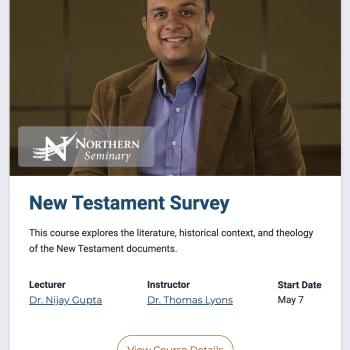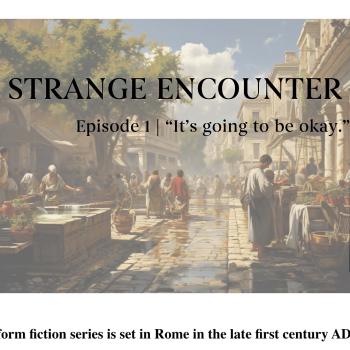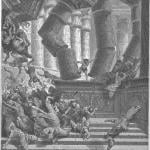
A couple of days ago I blogged on a multi-view book called Four Views on the Apostle Paul (ed. Mike Bird). Now, I would like to make mention of another recent book entitled Biblical Hermeneutics: Five Views (ed. Stan Porter and Beth Stovell). Now, while these books came out around the same time, not only are they in different series, but also by different publishers! Apostle Paul is a Zondervan title. Biblical Hermeneutics is an IVP title.
OK, now on to the substance of the book. Stan Porter and Beth Stovell are on to something very important. Scholars (and students and pastors) regularly argue and disagree about what this verse means and what that passage means. There are wider hermeneutical issues involved, not just in the interpretation of one passage, but in the whole manner of approach to the Bible itself. In the book, five scholars (representing five “schools of hermeneutical thought”) give their own take on the primary mode of interpretation. One nice feature of the book is that each one works on a case study, all working on Matthew 2:13-15. That addition helps one to see the practical difference between the contributors’ views.
Here are the five views.
1. Craig Blomberg (The Historical-Critical/Grammatical View) – Blomberg represents the traditional evangelical approach that focuses on history and basic exegetical method (which concentrates especially on grammar). I rather like Blomberg’s commentaries, but his case study on Matthew 2:13-15 was not especially interesting. I am “on-board” with the grammatico-historical approach, but I was taught in seminary that it needed to be complemented equally by literary criticism. So, I naturally utilize both historical and literary criticism regularly.
2. F. Scott Spencer (Literary/Postmodern View) – As the view title implies, Spencer is interested in the “synchronic connections in, around and in front of the text in contradistinction to diachronic developments behind the text” (68). I am not sure it was the best idea to blend a “literary” approach with a “postmodern” (or open-text) approach – I know often these go together for scholars, but they need not always do so. Still, Spencer was a good choice – clear, clever, and offering a persuasive essay. I am not sure the “literary” end of his view is all that controversial. Diachronic analysis has been waning for some time, though there are pockets of scholarship that insist on a revival (especially in Jesus studies)!
3. Merold Westphal (Philosophical/Theological View) – It is hard to summarize this approach. It is not really on par with the others – it is really a call for Biblical scholars to think more philosophically about hermeneutics and theology. There is really no reason for one to see this view in conflict with the others.
4. Richard Gaffin (Redemptive-Historical View) – it is hard for me to summarize Gaffin’s view as well. Here is what I understand from his “view”: Scripture is focused on Jesus Christ. It is based on revelation. It is directed towards God’s action of redemption. Much like Westphal’s essay, I kept thinking to myself, this does not seem to be a “view” that rules out or stands against any of the other views per se. I can’t say I had any trouble accepting Gaffin’s overall perspective, but I am not quite sure it is easy to compare and contrast it to the other views.
5. Robert Wall (Canonical View) – Wall is an expert in this area and his essay represents well the “canonical” view.
Strengths
Again, I love books where we get a nice broad picture of something critical (meaning “essential”!) to Biblical Studies. It doesn’t get any more important than “hermeneutics”! Also, who better to introduce the subject than Stan Porter? He is the hermeneutics and Greek guru (see here).
For me it was helpful to see evangelicals who think quite differently about hermeneutics. Sometimes I think that evangelicals (a group I identify with) are mostly “historical-critical.” However, this volume shows the breadth of evangelicalism. I think that can be a very good thing, and for the most part the various contributors are irenic in their responses.
I would also like to note that Porter and Stovell are to be commended for a fine conclusion that capably analyzes and synthesizes the discussion.
Weaknesses
While I appreciate that there are five views included in this book, I am not sure the 5 “views” are true alternatives. In some cases, it appears we are comparing “apples” and “oranges.” I think the Historical-Critical, Literary, and Canonical could be reasonably compared (and contrasted), because they are genuinely different “ways” of looking at a text and interpreting it. How this works out exegetically is very clear.
For the views of Gaffin (Redemptive-Historical) and Westphal (Philosophical), they are dealing with higher-order theological issues. Westphal is basically making a (good!) case that Biblical interpreters need to care more about philosophy and the hermeneutics of meaning. However, it is not clear how a “philosophical” view works in view of interpreting a particular passage. Note what Wall writes in his response:
…he [Westphal] offers no interpretive strategy in particular or a set of conditions that might help explain or guide one’s interpretation of Matthew 2:7-15. He evades a reading of this passage based on his philosophy of hermeneutics. (p 189)
One of the key areas of confusion here, then, is how one uses the word “hermeneutics.” Is it referring primarily to a method of interpreting Scripture (Wall, Blomberg, Spencer), or a broader philosophical approach to finding meaning in the Bible (Westphal and Gaffin)?
Personally, I think seminary students will learn the most from the introduction/conclusion, and then close comparison of Blomberg, Spencer, and Wall with interest in their responses.











